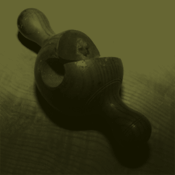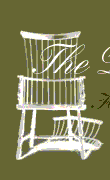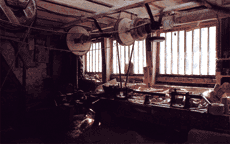The differentiating features of the Darvel
Chairs highlight the difference in technology available between their makers
and their counterparts in England. In every case the arm-bow is made from
a naturally curved branch, which is halved, opened out and joined at the back.
Many still retain a little bark. This is similar to boat building technology
where curved branches are used to make 'knees' and 'ribs'. The later chairs
have arm-bows cut from the solid plank. The spars or spindles are almost always
9/16 inches in diameter and have been made using a rounding plane on a treadle
lathe. They have not been turned by hand.

The Rounding Plane used to shape the
spoke backs of the Darvel Chairs.


